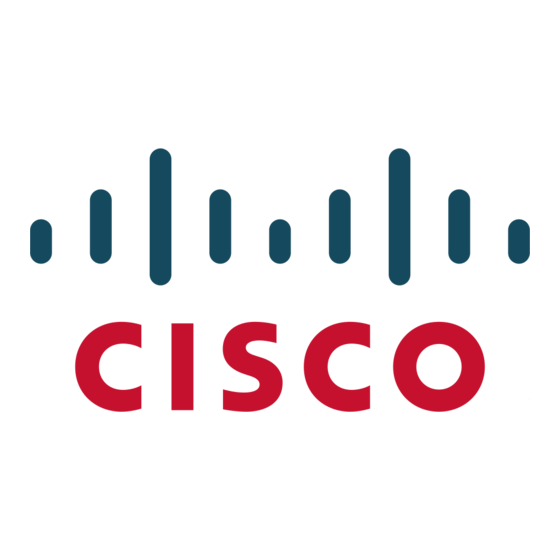Cisco TelePresence 사양 - 페이지 4
{카테고리_이름} Cisco TelePresence에 대한 사양을 온라인으로 검색하거나 PDF를 다운로드하세요. Cisco TelePresence 7 페이지. Configuring a cisco unified communications
manager sip trunk with a cisco telepresence content server
Cisco TelePresence에 대해서도 마찬가지입니다: 브로셔 (4 페이지), 설치 매뉴얼 (4 페이지), 관리자 매뉴얼 (27 페이지), 빠른 참조 매뉴얼 (2 페이지), 매뉴얼 (24 페이지), 설치 시트 (2 페이지)

Policy services: A policy services interface is available to allow you to define call policies to be applied
●
within your organization. For example, you can handle calls differently according to time of day, source or
destination address, or more complex algorithms. The policy services interface supports Call Processing
Language (CPL).
Clustering: The Cisco VCS can function as a standalone system or in a cluster configuration for increased
●
capacity and redundancy.
Administration: The Cisco VCS provides administrative interfaces to allow setup, administration, and
●
monitoring of the network configuration.
Table 1 lists general specifications, Table 2 lists appliance and virtualized application specifications, and Table 3
lists the certifications and awards of the Cisco VCS.
Table 1.
Product Feature
User Interface
Web browsers supported
Management interfaces
Languages supported
Endpoint Registration and Session Management
Supported endpoints
Endpoint registration
Session control
Zone control and bandwidth
management
© 2013 Cisco and/or its affiliates. All rights reserved. This document is Cisco Public Information.
Specifications of Cisco VCS Control
Product Specification
● Web interface support for Internet Explorer 8 or 9; Firefox 3 or later; and Chrome
● Support for industry standards such as Secure HTTP (HTTPS), XML, Simple Network Management Protocol
(SNMP v2 and v3), secure copy protocol (SCP), and Secure Shell (SSH) Protocol
● Embedded setup wizard for initial configuration
● Integration with Cisco TMS Version 13.2 or later for scalable provisioning and configuration
● Call logging and advanced diagnostics support
● English, Chinese (Simplified), French, German, Japanese, Korean, Russian and Spanish
● Cisco VCS is compatible with any standards-compliant H.323 or SIP videoconferencing or telepresence device;
provisioning and configuration supported only for Cisco TelePresence endpoints
● Support for manual registration of H.323 and SIP endpoints
● Support for registration of H.323 ID and E.164 aliases and services
● Support for Unicode (UTF-8) registration for global implementation
● Support for H.225/Q.931 and H.245 call-control routed mode and non-call routed mode
● Support for H.323-SIP Interworking Encryption
● Support for H.323-SIP Interworking DuoVideo
● Support for Uniform Resource Identifier (URI) dialing
● Support for direct call signaling among neighbored Cisco VCSs, border controllers, and gatekeepers
● Support for call policy management (RFC 3880), including call policy and user policy (FindMe)
● Support for conference hunting for multipoint-control-unit (MCU) clusters
● Support for call routed mode
● Support for call loop detection
● Support for remote zone monitoring
● Support for remote zone redundancy
● Support for up to 1000 neighbor zones (including Cisco VCSs, border controllers, gatekeepers, and
SIP proxies)
● Support for subzone area definition for bandwidth management
● Support for flexible zone configuration with named zones and default zone
● Support for forwarding of requests to neighbor zones
● Support for registration control (open, specifically allow, and specifically deny)
● Support for interzone bandwidth management: definable call by call
Maximum bandwidth per call
◦
Maximum aggregate bandwidth for all neighboring zones
◦
● Support for intrazone bandwidth management: definable call by call
Maximum bandwidth per call
◦
Maximum aggregate bandwidth
◦
● Support for auto-down-speeding if call exceeds per-call maximum
● Support for gateway load balancing
● Support for automatic network failover
Page 4 of 7
